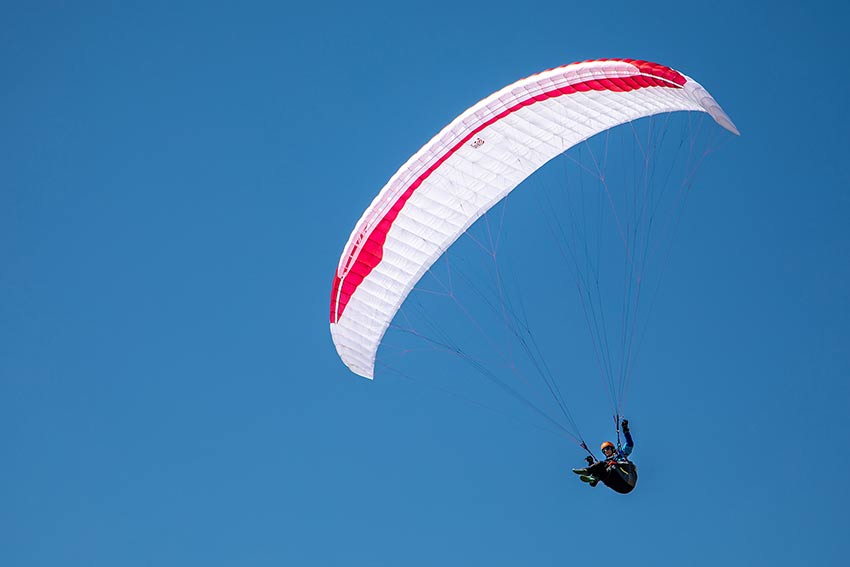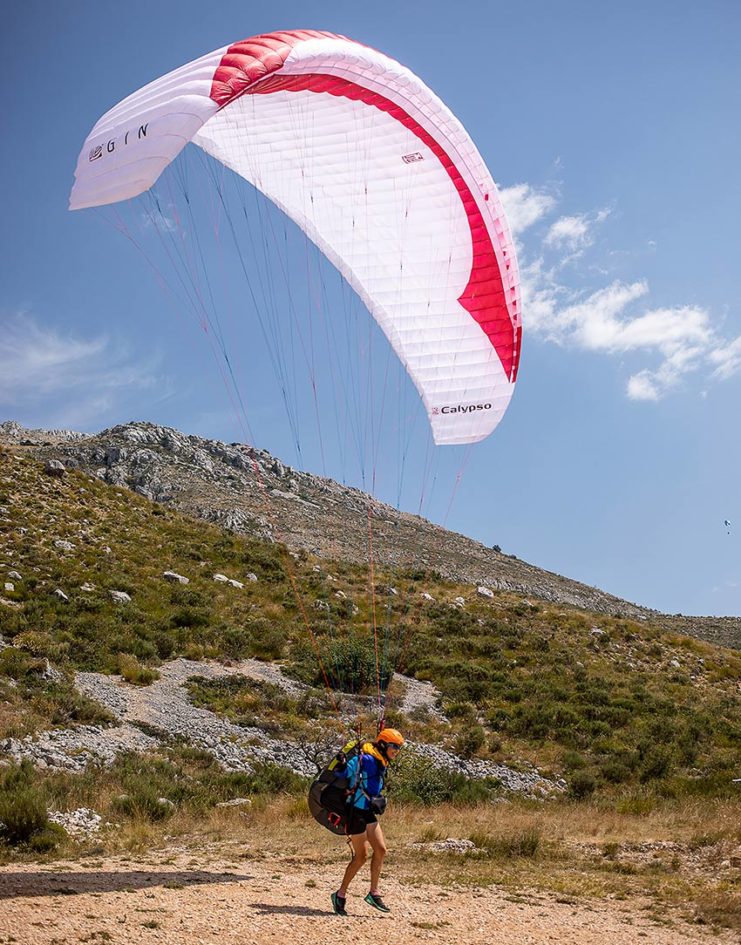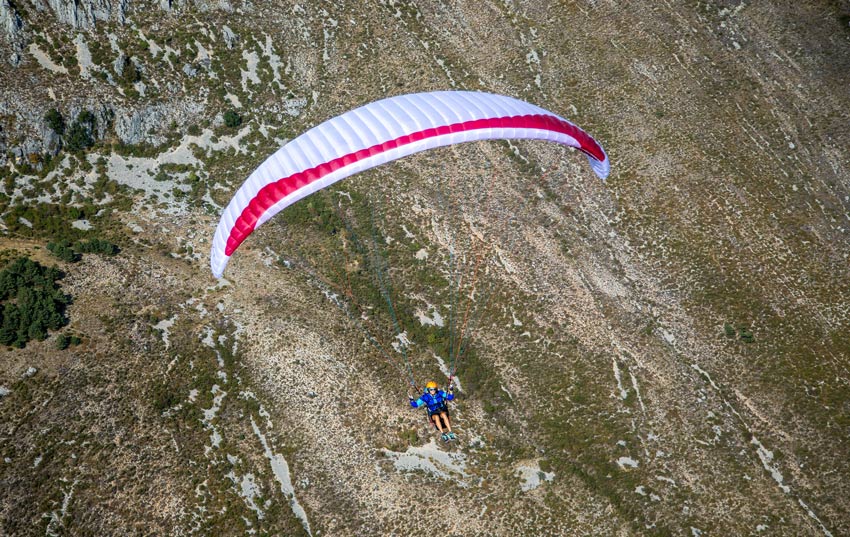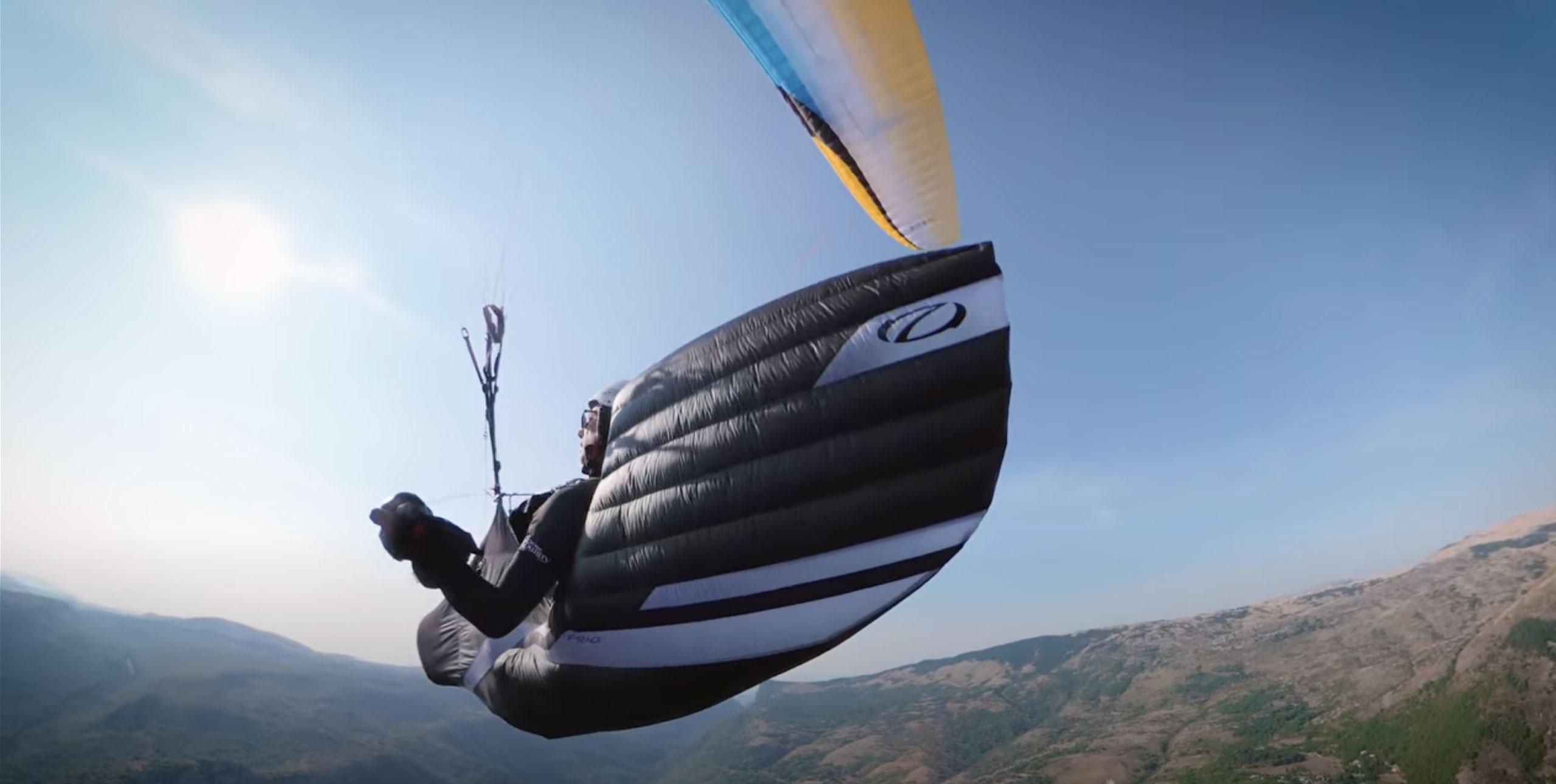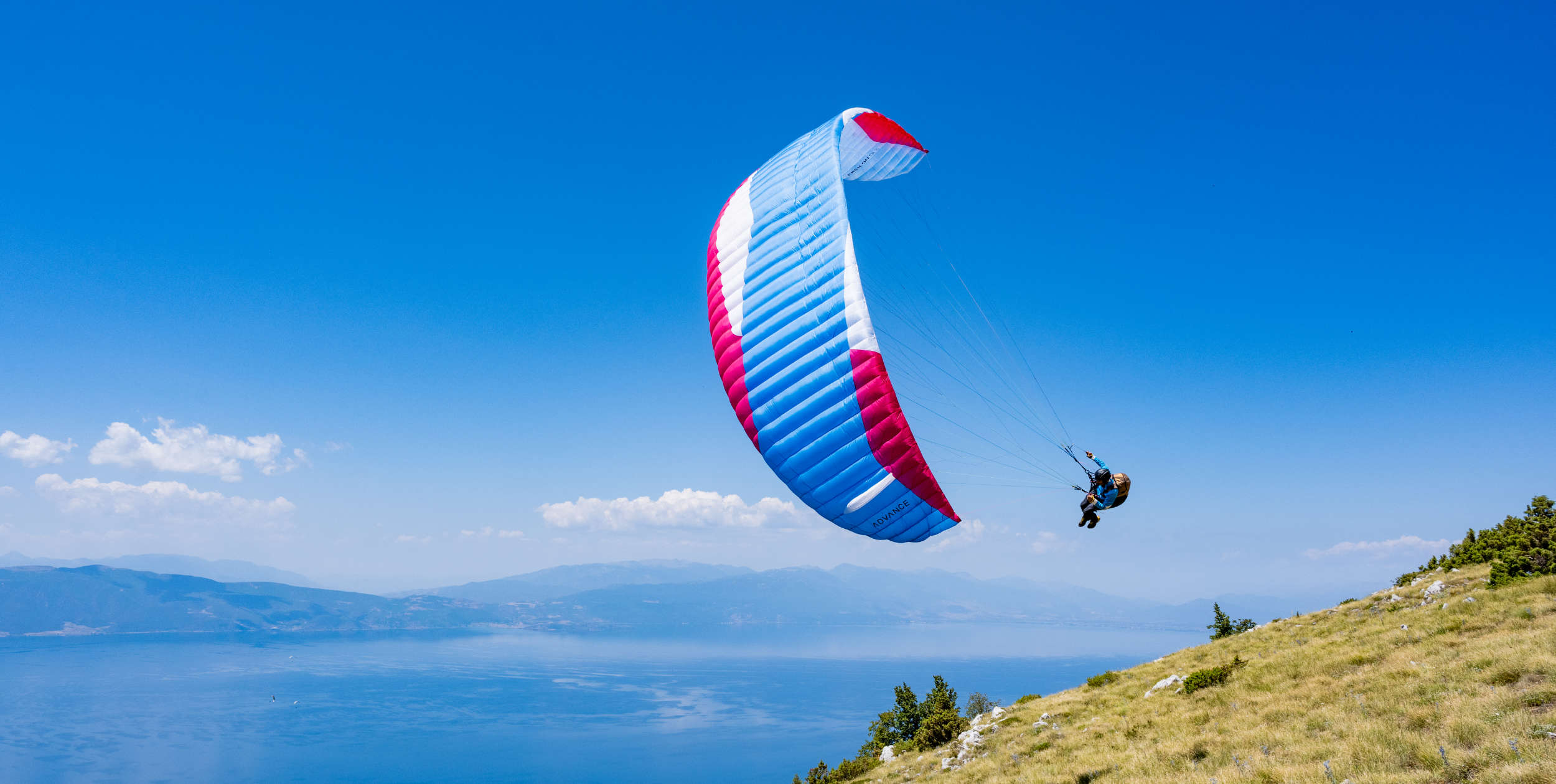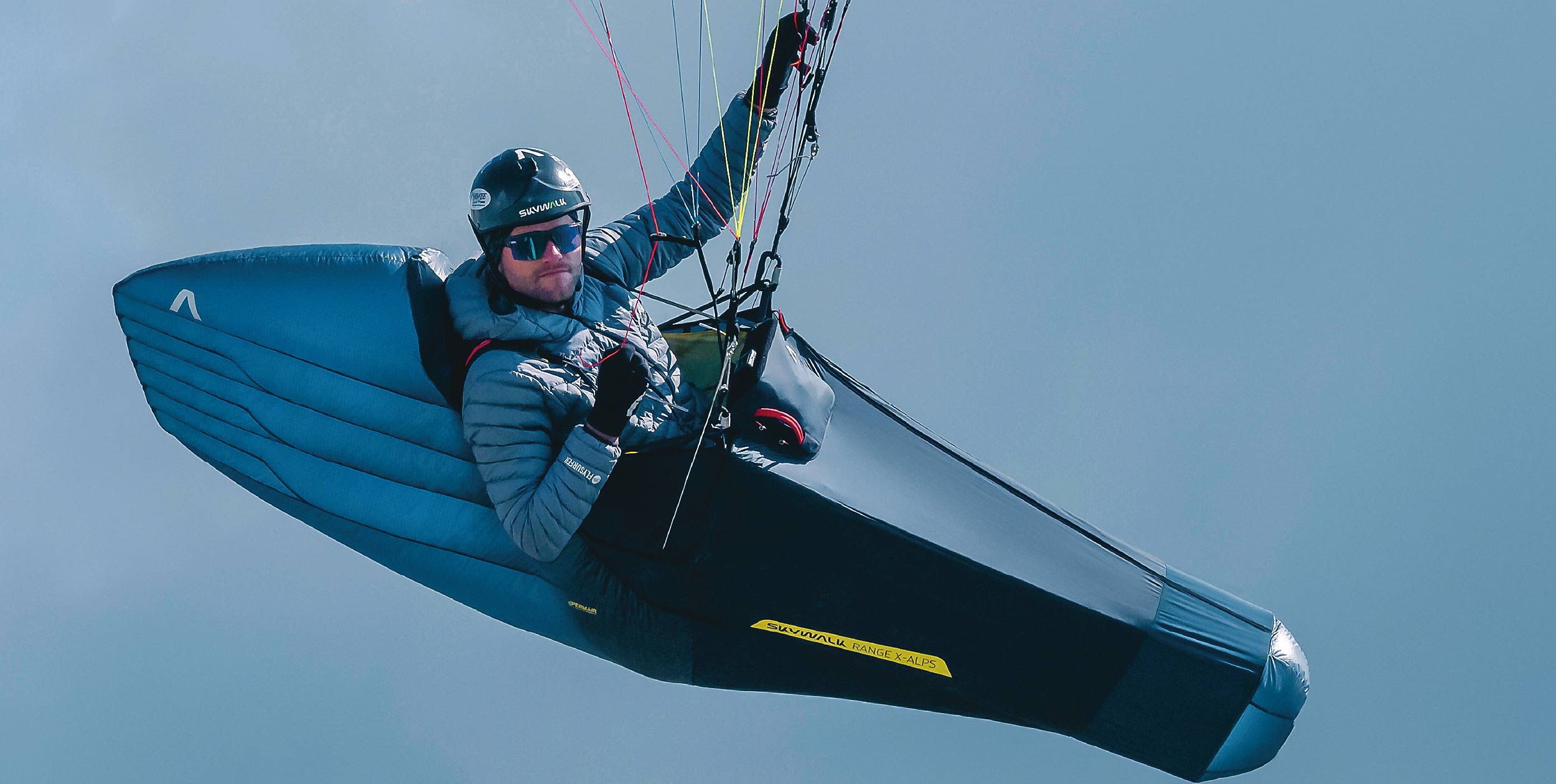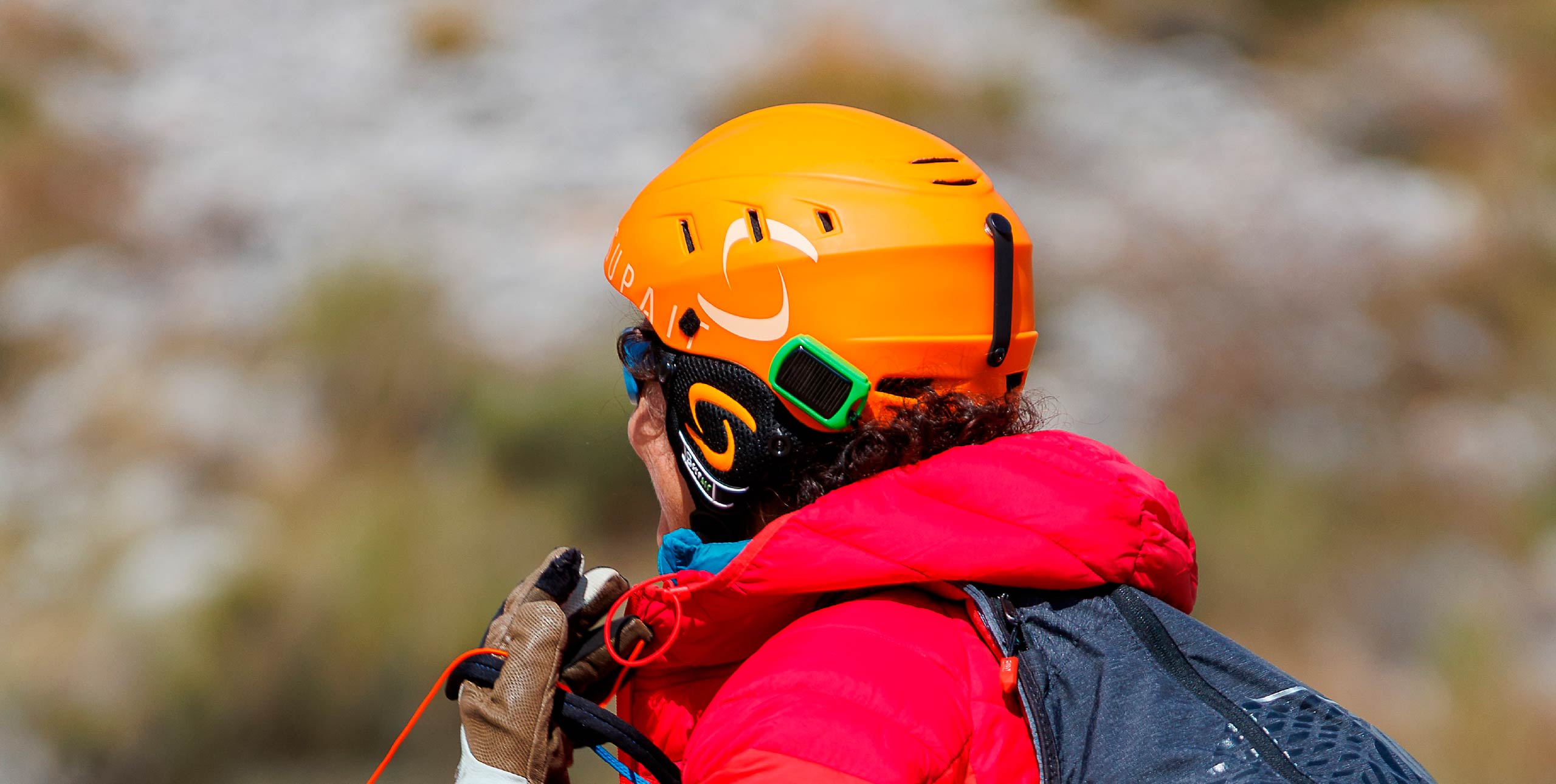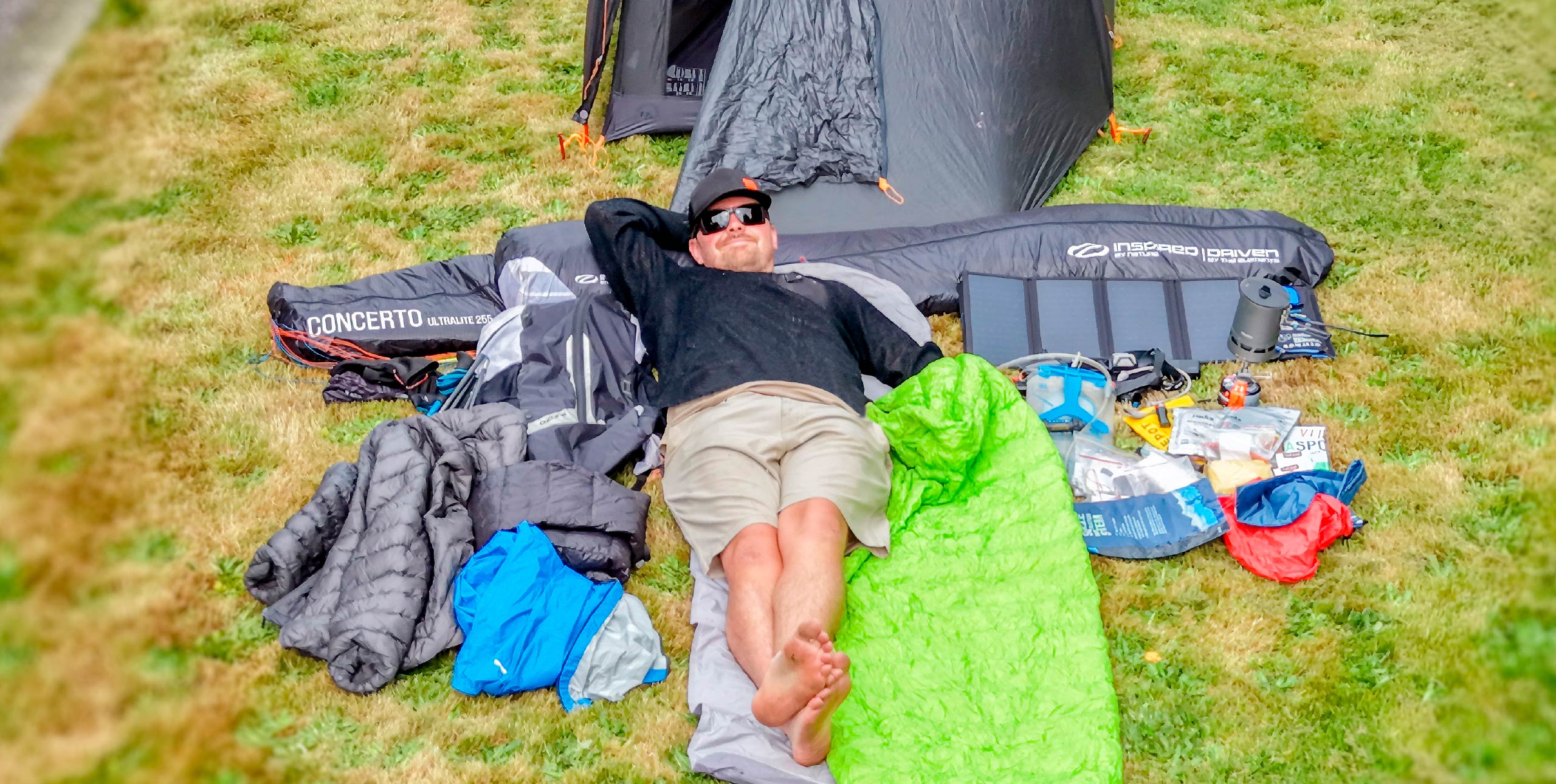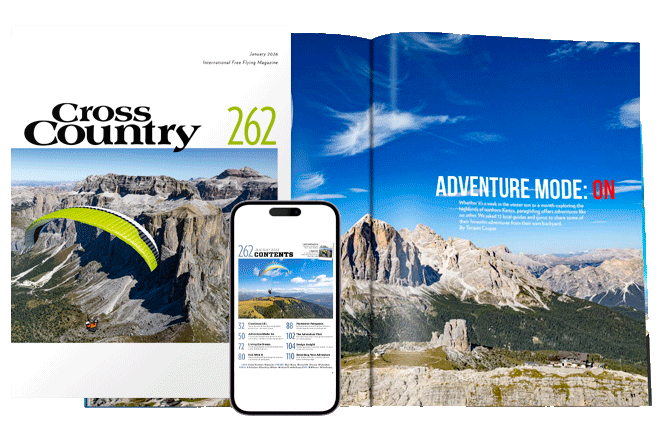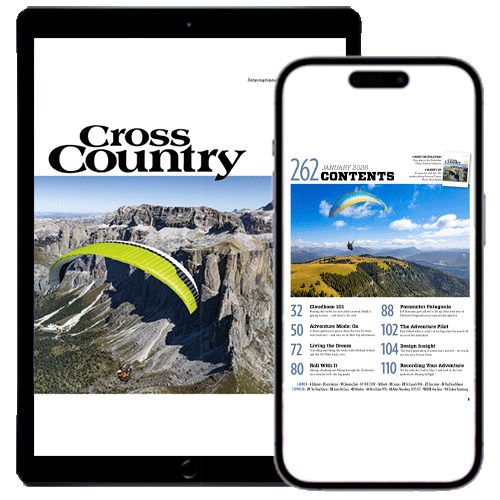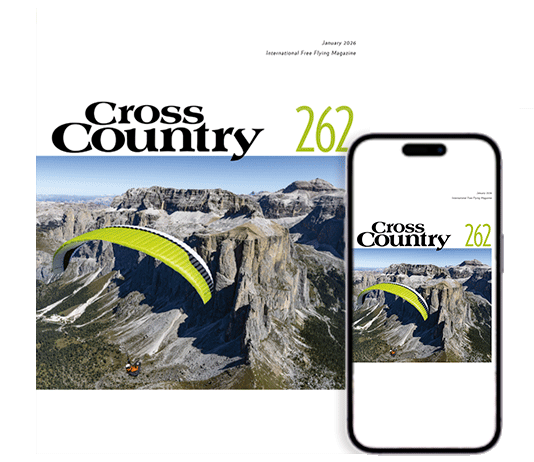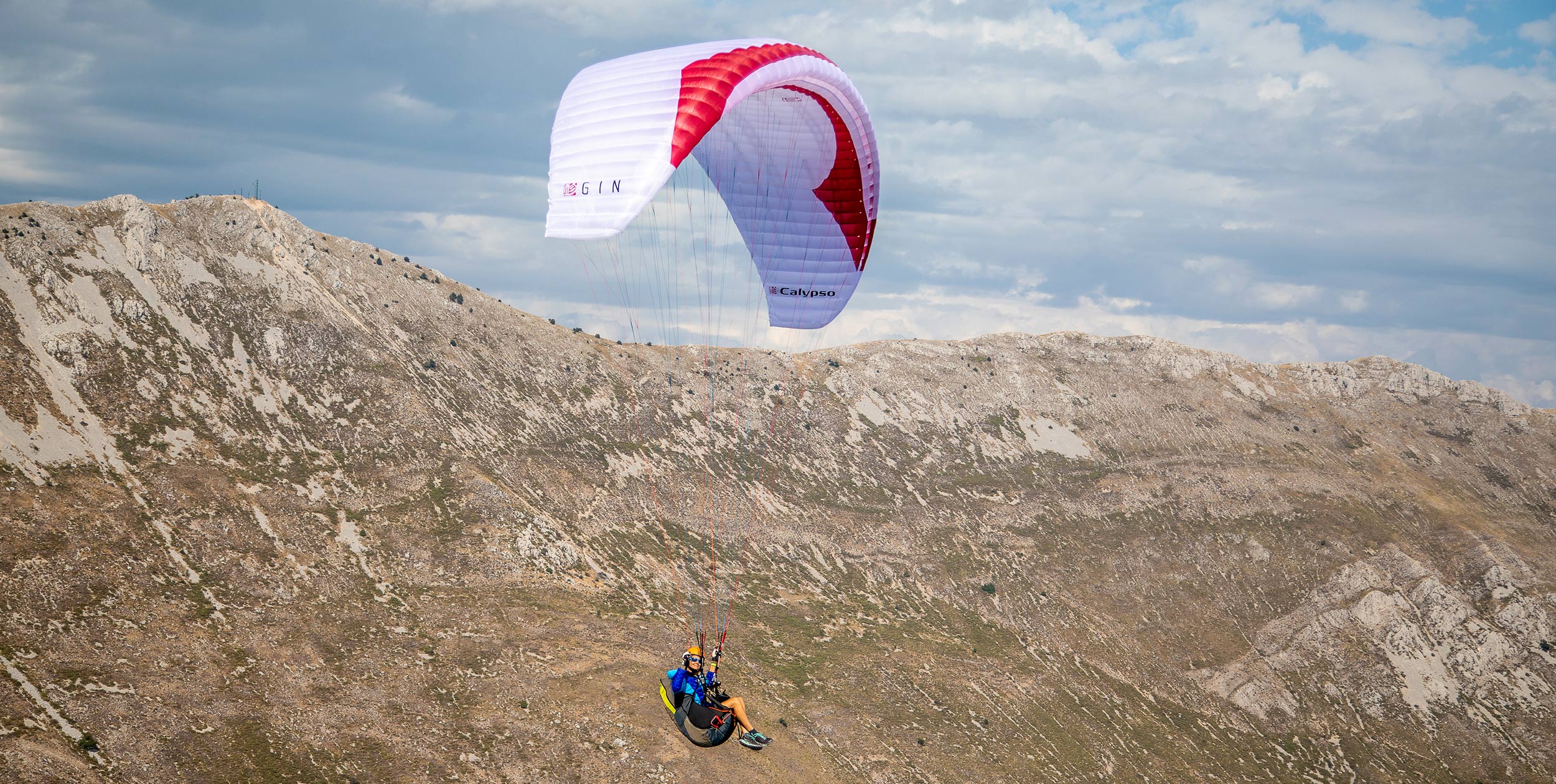
Charlie King flies this lightweight all-rounder aimed at progressing intermediate pilots. Photos: Marcus King
Ten-second review
A very good multi-purpose glider for the pilot who wants a wing to cover all the bases, from travelling to weekend XC. Light weight, easy launch characteristics and forgiving flying behaviour will appeal to many.
Background
Late last year Gin released the Calypso. It’s an easy EN-B lightweight intermediate, made to “travel light, fly far”. In other words light, but with cross-country capability.
Although it has the same cell count and aspect ratio (47 cells, 5.21 aspect ratio) as the Atlas 2, it’s not a lightweight Atlas 2 but is a new design, developed “from the ground up”. Gin said this, “enabled us more flexibility to tune the handling and stability of the wing to meet the demands of leisure and hike-and-fly pilots”.
The Calypso is made in five sizes, with basically the same sizes and weight ranges as the Atlas 2 but it’s not available in XL. The three largest sizes have extended weight ranges, an extra 5kg above the standard, so pilots can load it up to make it more dynamic and fly in strong winds.
I flew the Atlas 2 when it came out. I was in the range for both XXS and XS sizes, and opted for the XS. I loved the wing, and flew it with and without ballast, but felt I should have also flown the smaller one where I would have been higher up the weight range. With the Calypso I didn’t hesitate in choosing the XXS, flying it at around 70kg for a 55-75kg weight range. It definitely felt like the right choice.
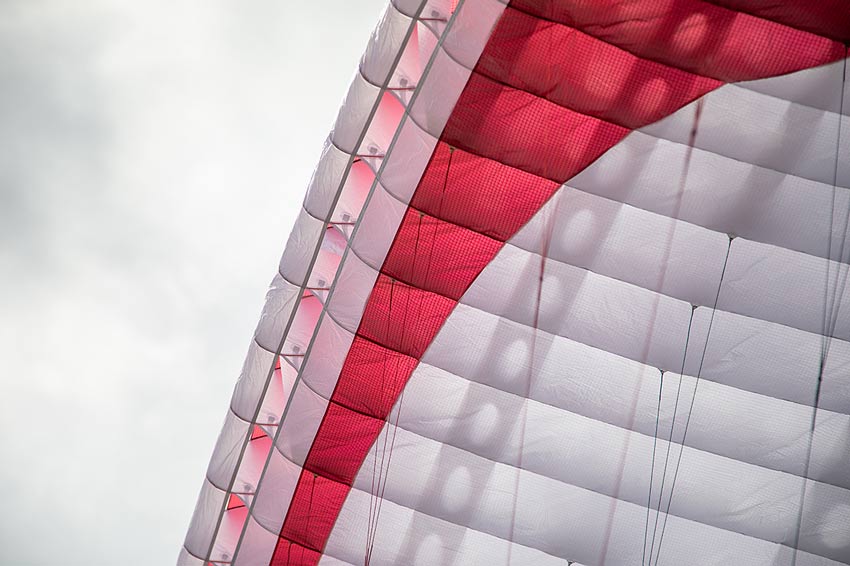
First impressions
For a wing that’s not made specifically for hike-and-fly, the Calypso is impressively light. It’s just 3.4kg in my size with standard risers, and you could reduce this to 3.2kg by opting for the lightweight Dyneema risers instead. The cloth is Porcher Skytex 27g/m2 on both surfaces, with some 34g/m2 reinforcing the leading edge.
The lines feel comparatively thick, being sheathed all the way up, but they make the glider more user-friendly: easier to see and more resistant to snagging on rocky launches. They are colour-coded, with red As (and a red stabilo) and blue Bs and Cs.
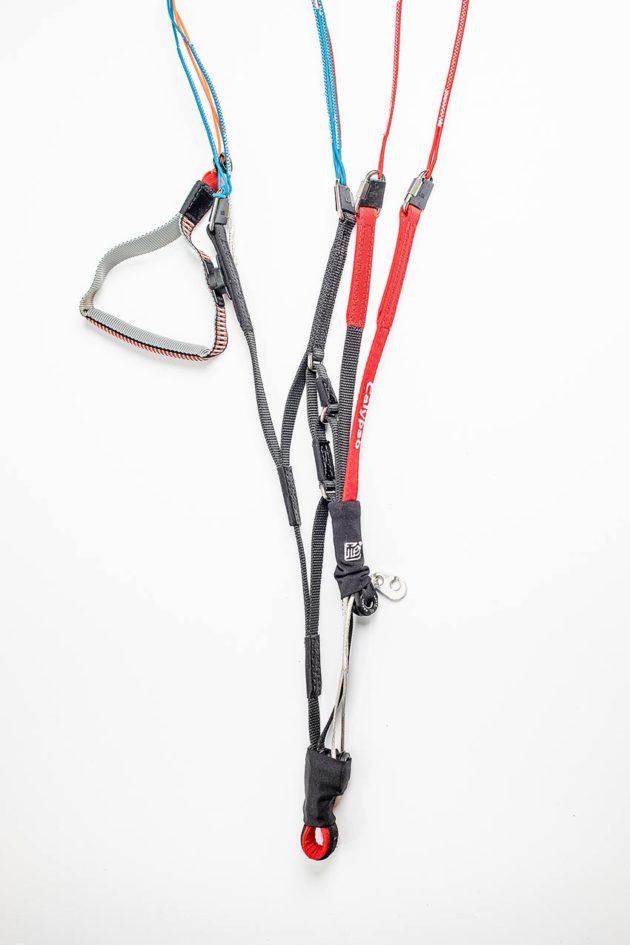
The 12mm webbing risers are neat and nicely finished, with material covers for the speedbar pulleys. These are quite chunky, good quality Harken. The brakes run through lightweight ceramic rings and the brake keepers are magnets. The magnets are fairly strong and have a small lip which helps keep them in place, and they did stay put pretty well.
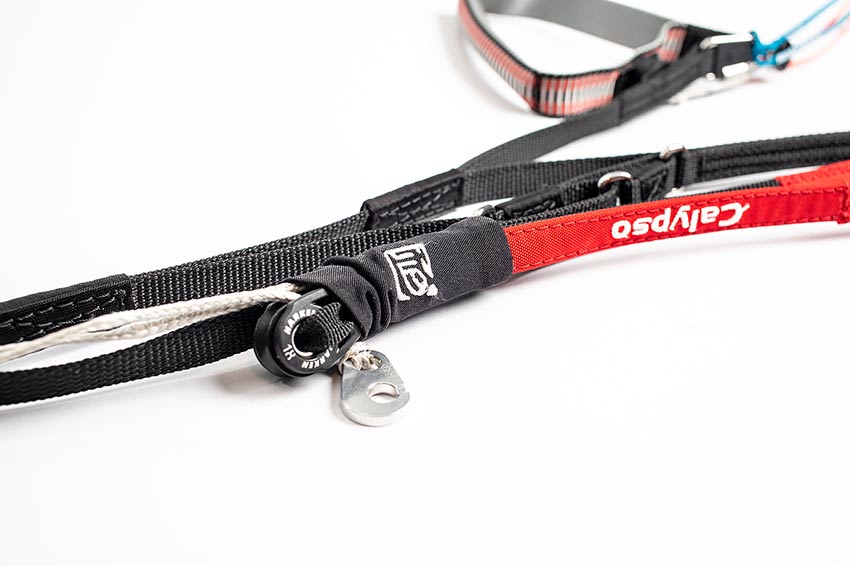
The A risers are split, with only one line on each. The inner one has ‘Calypso’ stitched on it which I found helpful to identify it as the top one, as 12mm is quite narrow and the risers can twist round each other a bit. The metal maillons connecting the lines to the risers have plastic inserts to keep them in the right place.
Looking up at the wing above your head, especially with the white fabric, you can clearly see two internal bands that run spanwise across the wing almost from tip to tip, and some shorter bands. The long bands have “holes” in them that make them lighter. On Gin’s website Idris Birch explains: “As always with light wings, we spent considerable time optimising the internal structure to reduce the weight as far as possible. In addition, we were able to increase the number of upper lines without increasing the total line consumption – this increases stability without compromising on performance.” The Calypso has some trailing-edge mini ribs, made from a similar flexible pink plastic to those in the leading edge. The manual does recommend concertina-packing the wing.
On the ground
I spent some time groundhandling the Calypso, and found it to be really well behaved and easy. It doesn’t need very much of a pull to initiate the rise, even in light winds which is really nice for light-wind launches particularly in small or rocky places. Once it’s rising it continues coming overhead by itself, and just takes a little dab on the brakes to stop it. Then it will sit above your head happily for as long as you want it to with just small corrections. If it starts to wander one way or the other you have plenty of time to correct it.
I found both forward and reverse launching to be easy and problem-free. It even forward-launched in a backwind with no problems. I have to say I’m generally happier launching in light winds than strong. I “got away with” one launch in strong and gusty conditions, entirely because of the wing’s nice behaviour.
A display of poor technique, starting with not bending the knees enough against the pull and ending with turning too soon, should have resulted in an aborted launch, but actually ended with the glider stabilised above my head and ready to go, albeit slightly downwind of where I’d started from! This kind of forgiving behaviour gives you a lot of confidence in a wing, especially for “uncomfortable” launch conditions.
In the air
I flew in all sorts of conditions, strong, weak, snotty and mellow. Right from the first flight I have to say I felt pretty comfortable under the Calypso. It does move around in turbulent air more than some other Bs, and I noted that from the first flight. But it gives feedback I can understand and reacts as I expected it to to brake inputs. I found the brake pressure to be fairly light but increasing the more you pull, and turning is intuitive and smooth. I found the Calypso very easy and pleasant to thermal, and more reactive to weightshift than some low-Bs I’ve flown.
I did have two or three uneventful tip collapses over the course of ten hours or so airtime. They were all, I think, when I found the hard edges of thermals. Once I had to pump one out, which I thought a bit strange as big ears don’t stay in by themselves, but I’m talking small wingtip collapses and nothing that altered the course of the glider or was worrying in any way. I did wonder if I should have been able to read the air better and prevent them, but I felt I was receiving and understanding the feedback so I’m not sure.
Hike-and-fly
I flew some hike-and-flies with the Calypso, which it’s ideal for as it is nice and light and small enough to fit in a reversible hike-and-fly harness easily. It’s easy to launch and its sheathed lines are definitely an asset. It feels, and is, very safe so I was more than happy to fly early mornings and early thermals without a reserve. I looked at the test report for the XXS size, and found that at the top of the weight range it got all As. It had just one B for full-speed asymmetric when flown lightly loaded, which is all very reassuring.
We also had some good late-summer cross-country conditions, with decent thermals to 3,500m or so, so I did a couple of short XCs. I love thermalling it, although if it’s a bit rough you know that, and its speed is good. It’s solid on bar so you feel you can use it without worrying, which is great.
I’d say the overall feel is a good balance of comfort, but with honest feedback about the air, and nice reactive handling. Big ears are a bit of a commitment, as you’re pulling down one of only two A-lines on each side, but they work with no drama. They do flap a bit and need to be held in, but I used them in anger several times to keep out of clouds and they work!

The verdict
The Calypso is a wing that is made for a wide range of uses, and I think it does them all well. It’s properly versatile, and doesn’t feel like a compromise. For the 200g extra I appreciated the standard risers, and the fact that the Calypso has sheathed lines. It’s still very light, but is user- and rough take-off friendly.
I think I represent Gin’s intended market for this wing exactly. It’s as if it was designed for me. Other pilots who also like to mix hike-and fly with thermalling and a bit of cross-country; who like to feel safe and appreciate an easy-to-launch wing; who don’t want heavy kit. This is for us!
Manufacturer’s SPECIFICATIONS
Gin say: “A lightweight, easy wing that incorporates all the latest technology from our intermediate and performance wings”
Use: Soaring, thermalling, cross country, travel
Pilot level: Beginner and intermediate
Sizes: XXS, XS, S, M, L
Flat area (m2): 20.99, 22.43, 24.42, 26.5, 28.66
Certified take-off weight (kg): 55-75, 65-85, 75-95-100, 85-105-110, 95-115-120
Glider weight (Dyneema risers) (kg): 3.2, 3.4, 3.6, 3.9, 4.4
Glider weight (regular risers) (kg): 3.4, 3.6, 3.8, 4.1, 4.2
Cells: 47
Flat aspect ratio: 5.21
Certification: EN B
Charlie flew the Gin Calypso XXS at around 70kg for 10+ hours in various conditions in the south of France and Annecy, with an Advance Success 4 and Gin Yeti convertible harnesses.
This review was published in Cross Country Magazine issue 215 (November 2020)

